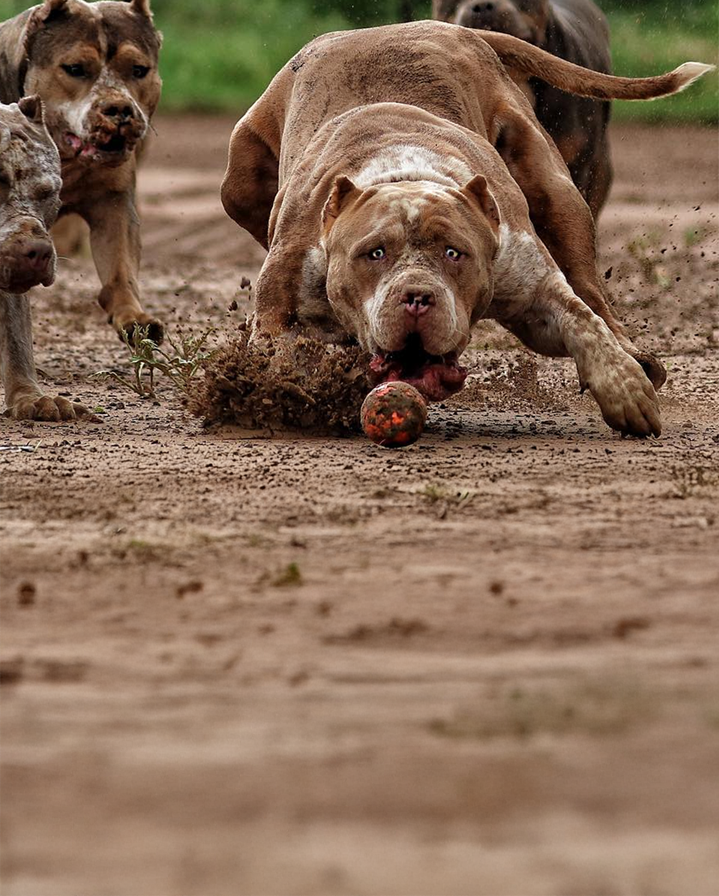How to Potty Train a Puppy: Step-by-Step Guide
Introduction to Puppy Potty Training
Potty training is an important disciplinary method essential for both indoor and outdoor pets. This training teaches them the right place to urinate and defecate. Non-potty trained pets will soil sofas, carpets, and even beds. This is a frustrating situation, especially for owners with multiple pets. Given this, the most ideal solution is to potty train pets at an early age.
Potty training includes several elements to be efficient. You need to learn puppy behavior, schedule creation and positive reinforcement. Read this article to find out all the things you need to know on how to potty train a puppy.

Understanding Puppy Behavior and Signals

It is vital that we understand how our pet behaves to train them well. One of the most important clues is their body signals. These imply their behavior and also serve as their way of communication. Additionally, owners must be observant as certain emotions also dictate their behavior. These emotions include excitement, anxiety, and fear. All of these are influential and affect their exertion.
A dog's bark, whine, and growl might mean a couple of things. These vocal signals often refer to their current emotion. Therefore, it is important to pay attention to how they behave towards you. They could be telling something crucial– as we may know, pets have the ability to sense danger.
Exposing their bellies might mean they want belly rubs. A puppy doing this is being playful. This might also be their way of telling you that they trust you.

A long, slow, and side-to-side tail wagging means that a dog is relaxed. This could also mean he is greeting you. A dog’s tail-wagging slowly means that something has caught their attention. This may also mean insecurity. When a dog’s tail starts to wag more quickly, this is a sign of alertness, and they may have picked up on a negative signal.
Recognizing the Need
One of the most apparent body signals from our dogs is when they are about to urinate or defecate. They tell you this through barking, whining, scratching the door, squatting, sniffing, and circling around. When they feel the urge to urinate, they may also raise their paws as a way of informing their owners.
Understanding Natural Instinct
Understanding natural instincts will give you insight on when to expect potties. For instance, one of the natural instincts of puppies is to urinate right after they wake up. They also tend to relieve themselves shortly after eating. Therefore, it is important to take them to their potty area upon waking up and finishing their meals.
Dogs are also easily distracted. Therefore, never talk or give attention to your pet while they are pooping or peeing. Also, avoid triggers that may cause them to feel excited when they are about to relieve themselves, such as toys or food, or exposure to children.
When to Start Potty Training?
Puppies must start potty training as soon as they are brought home. Starting early is essential but may be challenging. Don’t get frustrated early on. They do not progress that fast to fully assimilate potty training if they are too young. Take into account that training our pets requires patience and consistency to form their habits properly.
Best Age to Start
The best age for puppies to get potty trained is 12-16 weeks. At this age, they have well-developed bladder and bowel control. By the time the puppy is 16 weeks old, it is expected that he will have full control of his bladder and bowel. If properly trained, puppies should be fully potty trained between 6 and 18 months of age.
Why Timing is Crucial
Potty training in puppies less than the recommended age may not be efficient. First of all, very young puppies have not yet developed their bladder and bowel control. Newborns need genital and anal gland stimulation to go. By 2 weeks of age, puppies can already poop and pee on their own. However, their cognitive skills are not fully developed to respond to commands. Training this early will frustrate both the owner and the puppy.
Potty training older dogs is possible but definitely more difficult. Without potty training, the untrained dog will build his own potty routine which will not be easy to break off. The longer this routine has been going on, the harder it is to address. Therefore, the older the dog, the more difficult it is to potty train.
Preparing for Potty Training
Before starting to potty train, make sure you have the proper supplies, in addition to a schedule, and plenty of patience.
Essential Supplies
Here is a list of the supplies you will need when you start potty training your dog.
- Collar and Leash - use these when bringing your dog to go potty outside. These limit his potty area.
- Potty Training Pads - Use these initially when training your puppy indoors. You can also use these to transition to potty training outdoors.
- Crate - Use this as a confinement area when your dog is unsupervised. This teaches him to hold his bladder and bowel.
- Bell - Use this as an advanced cue for potty training. This is an optional supply that may apply to some dogs and owners.
- Cleaning Supplies - Have these in hand to keep your area well sanitized.
- Treats - Use these to encourage positive reinforcement. This is an important element of potty training.
Creating a Schedule
It is important that you make a puppy schedule based on their needs. Take note of the intervals between his potty breaks to create an effective schedule. Remember that in establishing a schedule, consistency is a must.
In general, you can follow these tips to create an effective schedule. These are the recommended times to bring your puppy to his potty area.
- Upon wake time. Use an alarm to be consistent.
- After meals. Wait between 5 and 30 minutes and take your puppy to his potty area
- After playtime. The stimulation of the digestive tract may also give your puppy the urge to have a potty break.
- After naps, take them for potty breaks as these mimic morning routines.
- Before bedtime. Make sure to practice this, especially in younger puppies.
The Basics of Potty Training a Puppy
There are several basic elements in potty training. These include the schedule, consistency and positive reinforcement. It is important that all of these are used when potty training.
Basic Tips
- Keep your pet on regular, scheduled meals. Give them specific time to finish their food as well. By doing this, the bowel movement is regulated and becomes more predictable.
- Clean previously soiled areas in the house. The scent left by past potties will encourage accidental soilage of these areas again. Clean the areas thoroughly until the odors are removed.
- Stick with the schedule. Be consistent in following the schedule to avoid confusing your puppy. Do not associate the potty schedule with other things (e.g. playtime).
- Always apply positive reinforcement. Use lots of treats, praises and rewards. This is one of the most important aspects of a successful potty training.
Recognizing the Signs
It is important to recognize the signs your puppy is giving you when they need to potty. These signs may vary but this list is applicable in general.
- Restlessness and circling
- Vocalization, especially whining
- Scratching or pawing at the door
- Returning to a previously soiled area in the house
- Sniffing or licking its groin
- Sniffing its rear
Steps on How to Potty Train a Puppy
- Designate a potty area. Take your pet to their potty area from time to time. At least every hour, right after they wake up is recommended for starters. You can gradually decrease the frequency as you learn your puppy’s habits.
- Take your pet on the right spot to relieve themselves once they wake up, after meals and playtime, and before bedtime. Use a collar and leash when training them to limit their access to the area.
- Stay with your pet and supervise him when going on a potty break. Your puppy feels safe with you around. Do this at least until he is fully potty trained. Never talk or disturb him while he is doing his business.
- Reward your puppy every time he goes potty in the right spot. Use lots of treats and praises. This will build enthusiasm to follow his routines. Remember to not punish your puppy for unwanted behavior.
Setting Up a Potty Training Area
Having an ideal potty area for your dog saves you time and effort. Therefore, it is important to really think about your dog’s potty area beforehand.
Tips for Creating an Appropriate Space
- The potty area should be easily accessible. Choose an open space. Limit your puppy’s potty training area. You can gradually increase the amount of space that they have access to once they are trained. This will help prevent accidental potties.
- Remove all distractions. The potty area must be far from where the puppy eats. Remove toys or other objects from the area. The potty area must also be well lit.
- Choose a comfortable and convenient surface. Grass, gravel, artificial turf, and specialized potty pads are some of the ones that you can choose from. Consider a surface that is easy to clean.
Importance of a Designated Area
Having a designated area for potty training benefits you and your puppy. First of all, it is convenient because you won't have to constantly clean up after your dog. You also control waste disposal and keep your home clean more effectively. This is beneficial to puppies too as it helps them develop a regular healthy habit.
Potty Training in Special Circumstances
There are special circumstances when potty training may be more challenging. Here are some tips on potty training at night, in an apartment and during winter. Some tips are also added for potty training older puppies.
At Night
Potty training your puppy at night may be the most difficult part of the training. It is important to address this in your puppy’s training to build a routine. Here are some tips to avoid sleepless nights and late-night mishaps.
- Have a bedtime routine. Being consistent with your puppy’s bedtime routine teaches him that this is not the right time to potty.
- It is also helpful to establish a consistent wake-up routine for potty, and use an alarm if necessary.
- Establish a “last call”. Before bedtime, you can take your puppy for a potty as their last go for the day. This is important for the first few months. As your puppy grows, he will be able to hold his urges for a whole night.
In an Apartment
Potty training your puppy in an apartment is tricky, especially if you live on higher floors. This means that sometimes, your puppy will need to have his potty break inside. Here are some tips to do potty training in an apartment.
- Establish a regular routine. For very young puppies, you will need to take them out frequently for potties.
- Have temporary indoor potty alternatives. The use of pee pads is helpful in times that you can’t bring out your puppy for a potty. You also have the choice to use grass patches which you can place on your balcony for potty training.
- Record your puppy’s potty habits. This will likely prevent accidents from happening. As your puppy grows, he will need less potty breaks.
During Winter
During cold weather, your puppy may be reluctant to go potty outside. This is more challenging for both you and your puppy. Here are some tips for potty training during winter.
- Provide warm clothing for your puppy. Use plenty of layers including sweater, scarf, protective booties/shoes, and coat on very cold days if possible. This is important if your puppy is not yet acquainted with potty training.
- Adjust the potty breaks to the warmest times of the day. You can feed your pet a little later in the morning, in hopes that it will delay their need to go until it is warmer outside. However, do not make major adjustments that will confuse the routine.
- Create a clear spot near the door. Remove snow or ice along the way. This will make the transition to the outside quick and convenient.
Older Puppies
The older the puppy, the more difficult it will be to train them. The same procedure applies but more patience is required. Here are some tips for potty training older puppies.
- Visit the potty area once per hour. Leash your puppy to limit his potty area. The good thing about older puppies is that they usually don’t need to go at night time.
- Wait for your puppy to poop or pee for 5 minutes. Avoid noise and distractions. Bring him inside if he does not go potty.
- Repeat with patience. Consistency is key in older puppies. In time, your pet will be able to understand the right spot for potty breaks.
Advanced Techniques for Potty Training a Puppy
Using a Bell
Combining bell training with potty and crate training will give you great results. Basically, the concept is for your puppy to ring the bell when he wants to go outside for a potty break. Here is a guide on how to use a bell for potty training.
- Make sure that your puppy’s routine is solid. Before using a bell, your puppy should have established his bedtime, feeding, and potty schedule. He should also have a playtime schedule.
- Incorporate the bell into potty training. You can hang the bell by the door you use each time you take the dog out. Make sure to hang it low enough for your puppy to reach with his paw or nose.
- Desensitize your puppy to the bell. Hold out treats near the bell, and ring it when your puppy comes to get the treats. Do this until the puppy associates the bell with positive experience.
- Teach your puppy to ring the bell himself. Before going outside on a scheduled potty break, set him down next to the bell. Take your puppy’s paw, hit the bell with it, and resume to potty break. In time, he will associate the bell with his potty breaks.
Using bells for potty training helps your puppy communicate with you. It gives a clear cue when your puppy is about to go potty. However, many dogs like bully breeds may want to go outside for a play rather than a potty. Puppies can learn to abuse the bell system by ringing it often just to get you to take them outside.
Rewards System
One of the most important parts of potty training is the rewards system. Training should always incorporate positive reinforcement and not punishment. There are several types of rewards that you can use. For instance, puppies are really food-driven so you can start using tasty treats with them. However, love, affection and praise are always the most effective rewards. You can also use toys, games and plays as rewards.
As your puppy becomes more potty trained, you can begin to shift how frequently you treat or reward him. The frequency is more of a personal preference. Every time your puppy goes for a potty break in the right spot, you can praise him. Still, you can give treats in more challenging times (e.g. winter season).
Common Mistakes to Avoid
Unsuccessful potty training is due to these common mistakes by owners. Make sure to avoid these mistakes to make your training efficient.
- Inconsistency. This common mistake confuses your puppy, which will make you start from scratch again. Consistency is key. Training may last from 4 to 6 months or longer, depending on the age of your dog.
- Not building a bond with your puppy. For your puppy to be trained, he needs to trust you first. Make sure to give your pet lots of affection and attention to achieve your goal.
- Skipping crate training. Crate training is one of the most efficient tools in potty training your puppy. Ensure that they build this skill along with potty training.
- Excessive use of temporary potty solutions. Using pee pads too often can easily send mixed signals that confuse your puppy on the right potty training habits. Instead, reserve these when really needed.
- Punishment. Punishing makes your puppy aggressive, shy, or terribly scared. Do not punish your puppy and practice positive reinforcement instead.

Dealing with Resistance or Regression
Resistance and regression are not uncommon in training puppies whether it be potty or crate training. There are ways that you can address these.
What is Regression?
A regression during potty training is when a puppy that seems to be potty trained starts to have accidents indoors again. A number of things can trigger regression. Inconsistent reward systems and long periods between potty breaks are the most common causes. Other causes that could be considered are stress, anxiety and illness.
How to Handle it
Handling regression is dependent on the type of trigger. Make sure to address these first before re-training your puppy. Provide an environment free from stress and anxiety.
Here are some tips on how to bring your puppy back on track.
- Set reminders on your phone. Take them to their potty area as soon as they wake up, after eating, drinking, and playing.
- Use the same potty area as before. A puppy’s scent gets left in an area and thus may help them get back on track.
- Always reward him afterwards. After a potty break, give him lots of praise and a treat and then head back indoors. Do this consistently.
Abnormal potty behavior that lasts for a couple of days even with these interventions may mean something else. Certain infections, such as urinary tract infections, may manifest as urinating in places other than their potty areas. Consult your veterinarian if you suspect that your pet is ill.
Handling Accidents and Mistakes
Accidents are commonly encountered in potty training. You can readily address these using immediate intervention.
Steps to Take When Accidents Happen
Accidents are common during the early parts of potty training. Be patient and follow these steps when accidents happen.
- Immediately take your puppy to his potty area. Praise your pup and give a treat if he finishes there.
- Do not yell or scold your puppy. Punishment will do more harm than good for your puppy.
- Clean the soiled area. The scent left in that particular area will motivate your puppy to go potty there again.
Avoiding Punishment and Using Correction Strategies
Punishment is avoided due to several reasons. First, it is the root of confusion and mistrust which negatively affects training. It also induces fear in puppies which may contribute to unwanted behavior such as aggression.
Correction strategies are more recommended. Most of them work by redirecting your puppy’s attention back to you. Take note that these are short-term fixes for problematic behavior. Here is a list of common correction strategies.
- Spatial correction. You can place a barrier on an area your puppy accidentally soiled on. This limits his access to this area.
- Verbal correction. During this, you can use tone inflection that indicates wrong behavior. Make sure not to startle or scare your puppy and use a firm voice only.
- Physical correction. This can come in various ways such as lead tug, holding the collar or scruffing. Make sure that you do not hurt your puppy, otherwise they become a punishment. This is only used to get their attention.
Maintaining Good Potty Habits
The goal of potty training is to maintain good potty habits in the long run. The consistency required does not end with training alone.
Tips for Long-Term Success
Good potty habits strengthen the link between the puppy’s potty area and their potty needs. These give your puppy a sense of predictability. Here are some tips for long term success of good potty habits.
- Consistent positive reinforcement. Upon being fully potty trained, your puppy will need rewards from time to time. This reinforces the association of good potty habits with positive experiences.
- Early correction of misbehavior. It is not uncommon to have accidents even in potty trained adult dogs. However, never punish your pet for it.
- Sticking to the schedule. Puppies are built into their routines. Do not alter the schedule unless you really have to.
Transitioning from Puppy Pads to Outdoor Elimination
When it’s time to transition your puppy from puppy pads to the outdoors, here is a step-by-step guide that you can follow.
- Gradually move the puppy pads towards the door and near outside every time your puppy takes a potty break. Reward him along the process.
- Take your puppy outside along with his puppy pad. Wait for him to do his business and repeat this step several times.
- Teach your puppy a “potty” phrase. You can encourage your puppy to go quicker by using a consistent potty phrase like “go potty”.
- Decrease the size of the puppy pad until your puppy learns to relieve himself without it. Some puppies may need to have a gradual transition. You can cut the puppy pads into smaller pieces.
Conclusion
Potty training is a great way to teach and bond with your puppy. For it to be successful, you need to have an appropriate schedule, consistency and positive reinforcement. Regardless of the age of your dog, you can definitely potty train him.
Is your dog potty trained? Share with us your experience by leaving us a comment below.
Additional Resources
Here are some additional resources on how to potty train and crate train your dogs at home.
Additional information on positive reinforcement.
Additional information for stubborn puppies.
Step-by-Step Puppy Training Schedule From Day One.










